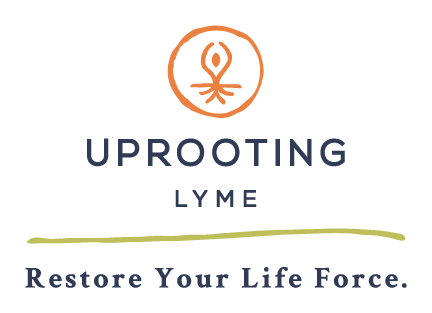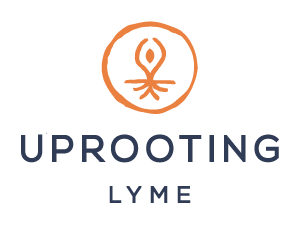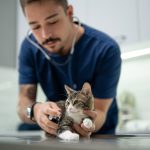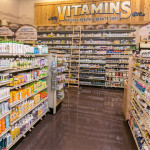
Busting Biofilm to Create Breakthroughs in Healing Chronic Illness
The road to healing from complex chronic illness is typically anything but quick, easy and efficient. On the contrary, most patients wonder if they will ever fully get their health back, and most of the practitioners I meet carry similar doubts and uncertainties. Perhaps reversing and actually healing complicated disease states is relatively rare.
Why is that?
There are many reasons for this that I have encountered and sought solutions for over the years, including:
… just to name a few.
One of the most significant drivers of complex chronic illness is infection. Stealth bacteria, persistent yeast, latent viruses, and subclinical parasites are a few examples of what lurks beneath many varied chronic health conditions. Sometimes these infections were acute at one point and treated incompletely (not fully eradicated); in other cases, these infections may go undetected and untreated for many years, burdening the vitality and immune system, and at times blooming into a full-blown health crisis.
There are several reasons that disease-causing microbes are successful at infecting our bodies over the long term. One primary mechanism of chronic infection is biofilm.
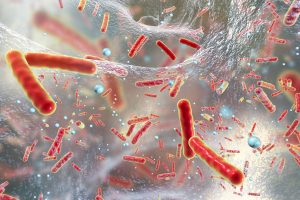
Antibiotic-resistant bacteria inside a biofilm, 3D illustration. Biofilm is a community of bacteria where they acquire antibiotic resistance and communicate with each other by quorum sensing molecules.
What is Biofilm?
Biofilm is a protective colony wherein many types of microorganisms (bacteria, yeast, parasitic protozoa, and in some cases viruses) can grow, communicate, reproduce, and eventually disperse from to potentially infect another part of the body.
Biofilm is composed of mucopolysaccharides, water, nutrients, waste, lipids and structural proteins. Picture a 3-dimensional slimy commune for germs. (1, 2, 3)
It is estimated that up to 60% of all human infections (and up to 80% bacterial infections) have biofilm involvement. What’s more, bacteria in biofilm are up to 5,000 times more resistant to antibiotics than their free-roaming comrades. (4, 5)
The big take-away: Biofilm and the microbes living inside can’t be treated in the same way as active or acute infection. In order to overcome these re-seeding chronic infections, we need a different approach.
Biofilm Busting Protocol:
There are 3 categories of medicinal substances I use to treat biofilm. They are:
- Essential Oils – thyme, oregano, tea tree, clove and lemongrass are some of the oils that have been shown to break up the matrix of biofilm. Fortunately, they are also anti-microbial so they can help to eradicate the infections as they are released from the breakdown of biofilm. (6)
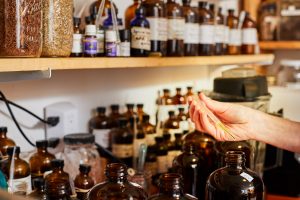 Other essential oils that contain ketones are also useful in breaking down the accumulations of mucus, such as dill and angelica. The best way to take essential oils internally is in liposomes (encased in a fatty layer). Two examples of liposomal essential oil remedies that treat biofilm are Bloom+Reveal’s Spiro Upward (recommended for chronic tick-borne infection e.g. Lyme) and Breakthrough (recommended specifically to break down biofilm).
Other essential oils that contain ketones are also useful in breaking down the accumulations of mucus, such as dill and angelica. The best way to take essential oils internally is in liposomes (encased in a fatty layer). Two examples of liposomal essential oil remedies that treat biofilm are Bloom+Reveal’s Spiro Upward (recommended for chronic tick-borne infection e.g. Lyme) and Breakthrough (recommended specifically to break down biofilm).
. 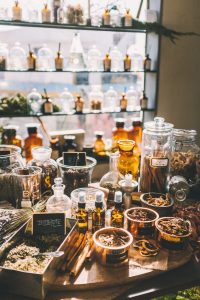 Herbs – different herbs have a variety of mechanisms through which they target biofilm. One is preventing adhesion in the initial stages. Another is inhibiting quorum sensing, the mechanism microorganisms use for communicating, organizing and building the community. Yet another is breaking up the matrix itself. Some of my favorite herbs to use for biofilm busting include betel nut, coptis, green tea, ginger, and garlic. (7, 8)
Herbs – different herbs have a variety of mechanisms through which they target biofilm. One is preventing adhesion in the initial stages. Another is inhibiting quorum sensing, the mechanism microorganisms use for communicating, organizing and building the community. Yet another is breaking up the matrix itself. Some of my favorite herbs to use for biofilm busting include betel nut, coptis, green tea, ginger, and garlic. (7, 8)
..- Enzymes – particularly lumbrokinase (from earthworm), serrapeptase, and nattokinase – as well as enzyme-rich foods such as manuka honey and, in my estimation, fresh vegetable juices. These also help to break apart the biofilm matrix and facilitate the process of ridding infectious microbes from the body once and for all. (9, 10)
Uprooting Lyme’s Treatment Approach for Highest Safety & Best Outcomes:
Because biofilm houses multi-species colonies of disease-causing microorganisms, dissolving biofilm is not to be undertaken on a whim. The following guidelines set the stage for how and when to treat biofilm in the context of your patient’s healing journey.
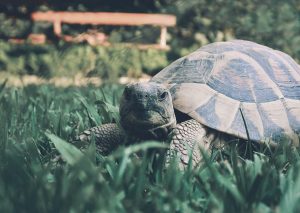
- My best piece of advice in treating biofilm is take it slow. Think long-term and be persistent. The patient should already be on an antimicrobial protocol that has proven effective for them, and they need to be ready for the next step. We always instruct our patients to ramp up slowly on these products.
- Ensure elimination is happening. We incorporate detoxification through lifestyle, herbs, and other methods before jumping on the biofilm-busting bandwagon. This is because doing too much biofilm dispersion too soon could cause microbes to erupt from latency without the body’s ability to clear them efficiently. Having sufficient detoxification protocols in place helps to avoid unwanted side-effects and complications.
- The body needs to have some strength and should not be overly symptomatic. Often it is necessary to build up the vital life force energy and stabilize the body systems before digging into biofilm and seeking to eradicate deeper layers of infection.
Knowing how to successfully address biofilm can make the difference in overcoming plateaus and recurrences when treating patients with chronic infections. If you have questions or experiences to share, please comment below!
Want to hone your ability to heal complex chronic illness?
The Holistic Lyme Practitioner Mentorship is the only in-depth practitioner training in the holistic treatment of Lyme and complex chronic disease.
Register HERE to learn about joining our community of practitioners who are leading the way in healing naturally from complex illness. Together, we’re redefining what’s possible for our patients.
Sources:
- Thoulouze MI, Alcover A. Can viruses form biofilms? Trends Microbiol. 2011 Jun;19(6):257-62. doi: 10.1016/j.tim.2011.03.002. Epub 2011 Mar 31. PMID: 21458997.
- Lopez MA, Nguyen HT, Oberholzer M, Hill KL. Social parasites. Curr Opin Microbiol. 2011;14(6):642-648. doi:10.1016/j.mib.2011.09.012
- https://www.immunology.org/public-information/bitesized-immunology/pathogens-and-disease/biofilms-and-their-role-in
- Spoering AL, Lewis K. Biofilms and planktonic cells of Pseudomonas aeruginosa have similar resistance to killing by antimicrobials. J Bacteriol. 2001;183(23):6746-6751. doi:10.1128/JB.183.23.6746-6751.2001
- Del Pozo JL, Rouse MS, Patel R. Bioelectric effect and bacterial biofilms. A systematic review. Int J Artif Organs. 2008;31(9):786-795. doi:10.1177/039139880803100906
- Feng J, Zhang S, Shi W, Zubcevik N, Miklossy J, Zhang Y. Selective Essential Oils from Spice or Culinary Herbs Have High Activity against Stationary Phase and Biofilm <i>Borrelia burgdorferi</i>. Front Med (Lausanne). 2017; 4():169.
- Lu L, Hu W, Tian Z, et al. Developing natural products as potential anti-biofilm agents. Chin Med. 2019;14:11. Published 2019 Mar 20. doi:10.1186/s13020-019-0232-2
- Koh KH, Tham FY. Screening of traditional Chinese medicinal plants for quorum-sensing inhibitors activity. J Microbiol Immunol Infect. 2011 Apr;44(2):144-8. doi: 10.1016/j.jmii.2009.10.001. Epub 2011 Jan 14. PMID: 21439518.
- Hogan S, O’Gara JP, O’Neill E. Novel Treatment of Staphylococcus aureus Device-Related Infections Using Fibrinolytic Agents. Antimicrob Agents Chemother. 2018;62(2):e02008-17. Published 2018 Jan 25. doi:10.1128/AAC.02008-17
- Selan L, Papa R, Tilotta M, et al. Serratiopeptidase: a well-known metalloprotease with a new non-proteolytic activity against S. aureus biofilm. BMC Microbiol. 2015;15:207. Published 2015 Oct 9. doi:10.1186/s12866-015-0548-8
